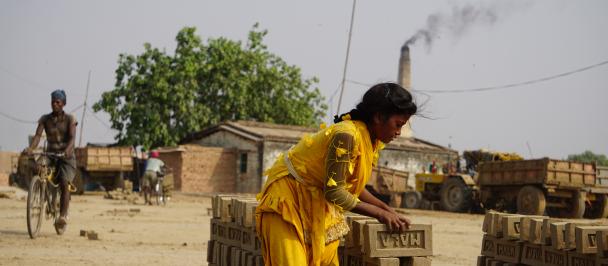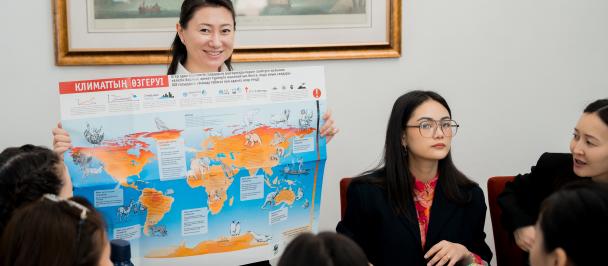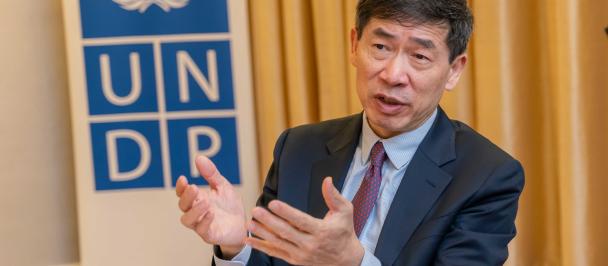Written by Nguyen Thi Kim Anh, Junior Communications Consultant
New sustainable livelihood model with intercropping black tiger shrimp and green crabs
November 15, 2022
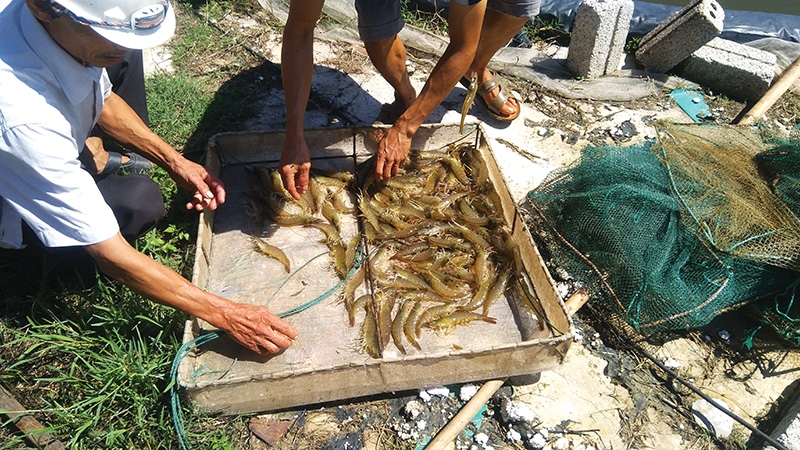
In Nga Tan commune of Nga Thuy district, a coastal area in Thanh Hoa province, the lives of many local households have been improved since the development of sustainable livelihood models associated with mangrove regeneration.
Every morning, Mr. Nguyen Ba Sang gets up early to take care of his five ponds. Sang, the main provider in his family of three, has been in the aquaculture business since 2012. He currently owns nearly one hectare of pond area where he extensively farms shrimp, crab, and fish.
“I focus on extensive farming instead of industrial farming because industrial farming requires a lot of money, and extensive farming is a sustainable model for farmers,” says Sang.
Many families in the coastal area of Thanh Hoa province have been gradually transitioning to polyculture. Applying new sustainable livelihood models, such as intercropping black tiger shrimp with green crabs or tilapia, is not only more environmentally friendly, but is also bringing higher economic efficiency and improving their incomes.
These local sustainable livelihood models are supported by the project “Improving the resilience of vulnerable coastal communities to climate change-related impacts in Viet Nam,” which is being funded by the Green Climate Fund (GCF) and implemented by the United Nations Development Programme (UNDP) in collaboration with the Government of Viet Nam. This particular activity falls under the project’s component dedicated to restoring mangrove forests and promoting alternative livelihood models.
In the past, most farmers like Sang applied a monoculture model in which they raised only a single type of aquatic product. However, long-term monoculture polluted the water and surrounding environment, resulting in shrimp and fish that succumbed easily to disease or did not meet quality standards, causing farmers many difficulties especially when the fishes got diseases and he could not sell them. According to Mr. Nguyen Viet Nghi, the GCF project’s coordinator in Thanh Hoa province, this led some households to dry out their ponds and give up farming entirely for fear of having their fish die again.
Sang and many others in his community also used to catch aquatic resources in the local mangrove forest to earn extra income. However, since the project has been restoring coastal mangroves, those areas have come under strict management, meaning that local people are no longer able to farm fish there and their earnings have been affected. In order to compensate, the project has supported several types of alternative sustainable livelihood models to meet different households’ needs.
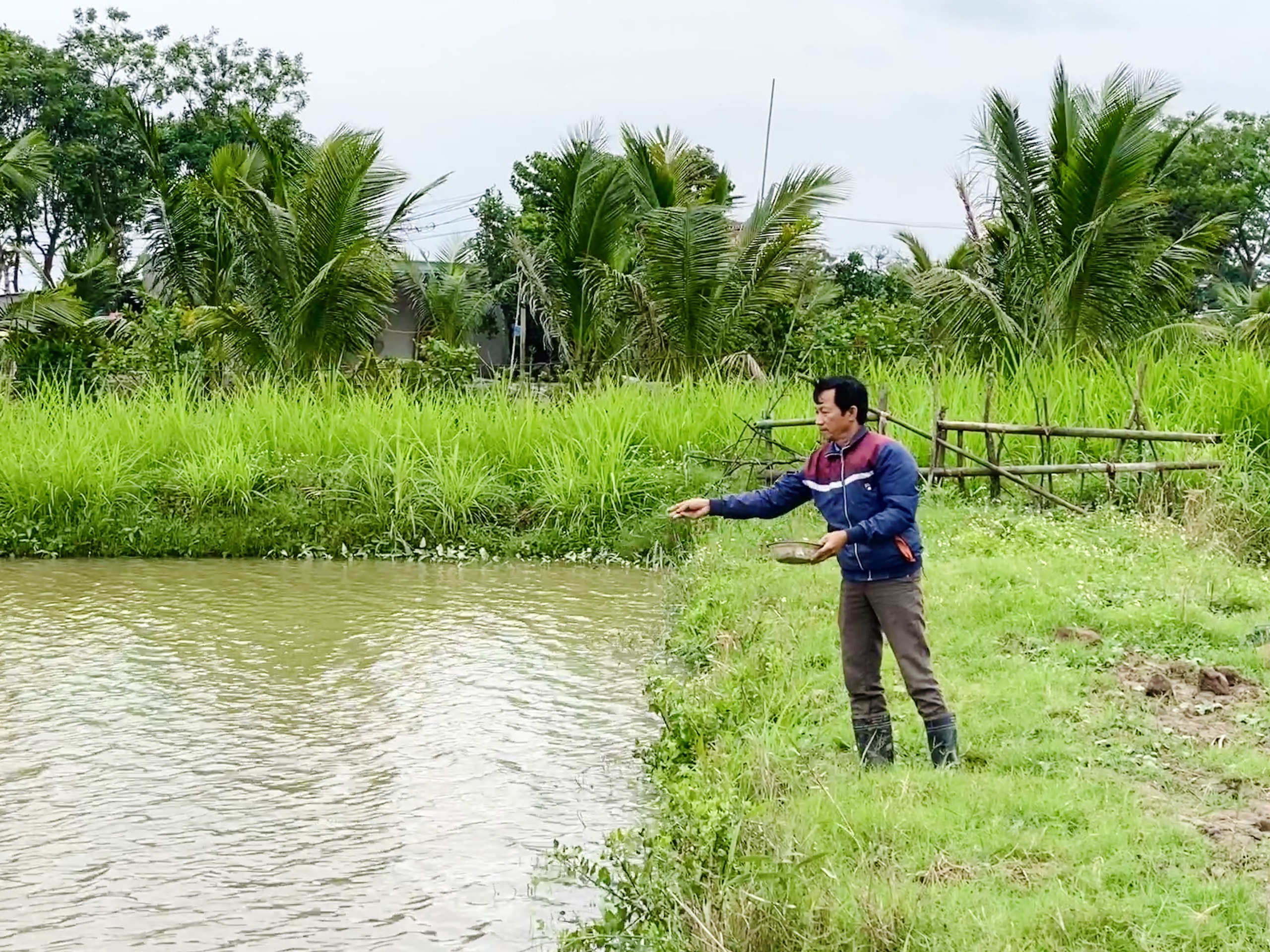
When Sang joined the project, he received 1,000 free crab seeds for intercropping with black tiger shrimp. “My family has been supported with crab seeds by the project since 2020, and some other households have received black tiger shrimp,” he says. “From my experience, the breeding stocks are all of great quality.”
All the seeds are carefully selected by the project from reliable, high-quality sources. According to Sang, the stocks provided by the project are highly effective: the crabs’ average weight is around 400-500 grams, and some of the larger ones can weigh up to 700-800 grams. The breeding rate is also 60%, which he notes is a very high rate for extensive farming.
In addition to the shrimp and crab seeds, households participating in the project also have access to technical training courses, which allow them to improve their aquaculture skills and knowledge as well as to connect with one another to share their own experiences.
“Before the project, some people did not have a good grasp of farming techniques, so there were many failures,” Sang explains. “We are now equipped with special knowledge from both the project and other farmers. The project has gathered all the farming households together to share their experience.”
Based on his wealth of knowledge from ten years of work, along with the techniques he has learned through discussions with other project households, Sang has been intercropping carp with shrimp and crabs. Accordingly, this creative extensive farming livelihood model has been beneficial for him and his family. “Since joining the project, my income has been more stable,” he says. “Carp farming has been highly effective, because it continuously oxygenates the aquatic environment in the pond. The crabs can then exploit the bottom layer, absorbing and filtering waste. Fish and crab farming also supports the environment needed for raising shrimp.”
The project has brought positive impacts to many other households in coastal Nga Tan commune like Sang’s, and is encouraging more locals to develop sustainable livelihoods to adapt to climate change.
Awareness of environmental protection in the local community has also improved, Sang adds, especially for families engaged in aquaculture. “It has the potential to make or break farming, so every household knows to protect the environment.”

 Locations
Locations